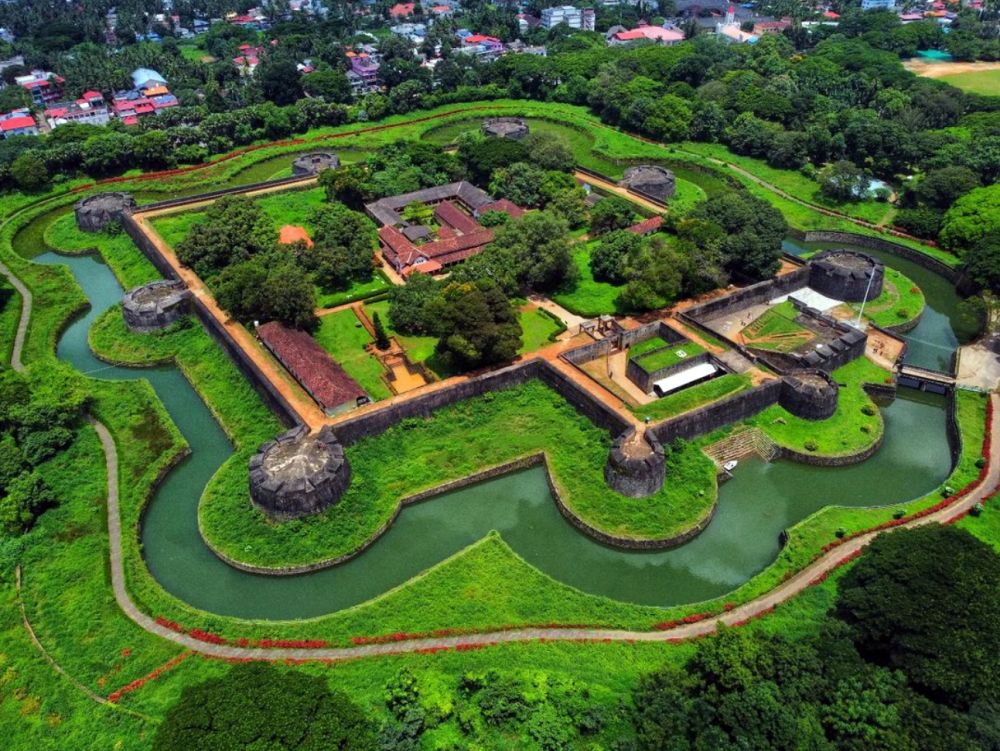

Palakkad Fort, also known as Tipu's Fort, is situated in the heart of Palakkad town of Kerala state, southern India. It stands as a symbol of rich historical significance and architectural splendor.
Built by Hyder Ali in 1766 AD, the fort has witnessed several crucial moments in South Indian history. After the malaise of Marathas, the fort came under the administration of Tipu Sultan, Hyder Ali’s son, who enhanced its structure. During the struggle against the British, the Fort slipped into the hands of the East India Company. It was also temporarily captured by the British during the Third Anglo-Mysore War but was recaptured by Tipu Sultan in 1784. After Tipu's defeat in the Fourth Anglo-Mysore War, the fort came under British control in 1790. Since then, it has been preserved as a protected monument under the Archaeological Survey of India.
The fort is known for its granite walls, a moat surrounding the fort, and a drawbridge that was historically used for accessing the main gate. The fort's architecture shows the prowess of military fortification during the 18th century and is remarkably well-preserved to this day. Within its precincts is a temple, a sub-jail, and a martyrs' column.
Tourism in the fort emphasizes the cultural and historical value of the place. Visitors are drawn to its ancient architecture and the tales of valor associated with it. The Government of Kerala and the Archaeological Survey of India have been promoting the site to highlight Kerala's diverse historical attractions. The fort's open grounds also host various cricket matches and public events, adding to its role as a community gathering space.
Lately, there has been an increased interest in eco-tourism and cultural tourism in Kerala. Visitors to Palakkad Fort are also exploring the surrounding green landscapes of Palakkad which is known as the "Granary of Kerala" due to its vast paddy fields. There is a surge in demand for experiential travel where tourists participate in local customs and culinary experiences. The fort aligns with these trends as it is a testament to the rich cultural tapestry of the state, offering a direct link to its storied past.
With the advancements in technology, virtual reality tours and augmented reality experiences are becoming more common, providing visitors with immersive historical experiences, even from the comfort of their homes. Furthermore, there is a growing emphasis on sustainable tourism practices in the region with the goal to preserve the fort and its surroundings for future generations.
For those interested in visiting, the best time is between November to March when the weather is relatively cooler and pleasant. The fort is easily accessible by road and is a must-visit for anyone interested in the historical and cultural heritage of Kerala.
Note: While visiting historical sites, please respect the local culture and heritage, and follow the guidelines issued by the authorities to ensure the preservation of these valuable historical monuments.